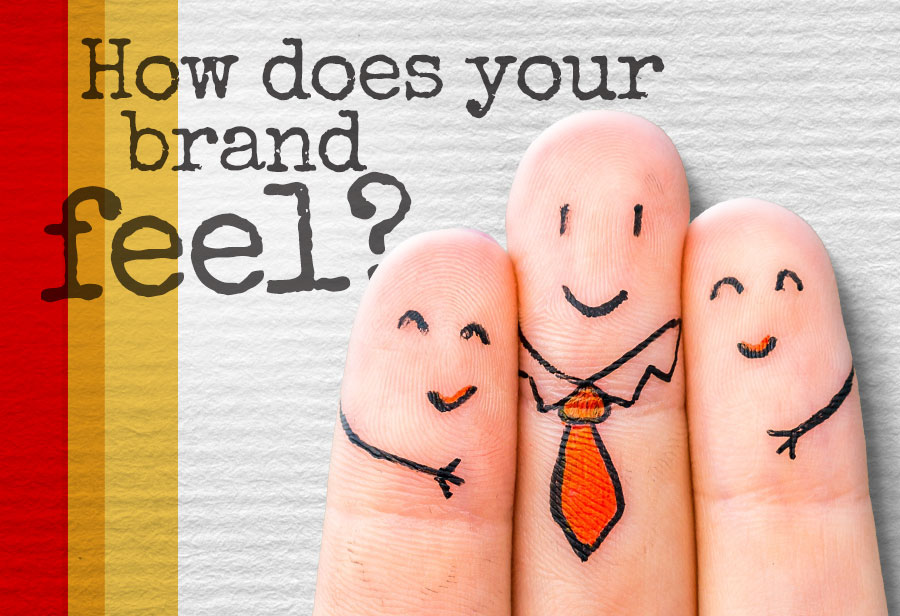
Thinking
How does your brand feel – a deep dive

Do you still hear the phrase “print is dead?” Pair that with the struggles in the newspaper industry and the dramatic rise of online advertising and we are likely to believe it. However, print is still a very relevant medium for your brand – and your brain – and there is scientific evidence to support it.
Personal experience is the most meaningful experience to a consumer. And, as brands are constantly vying for attention, the playing field becomes more and more crowded. Everyone wants your attention. So, as the world shifts toward digital due to budgets, fad and lifestyle, it might do some good to consider a few traditional approaches to compliment your brand and to communicate more effectively.
Communicating well is equal parts art and science, and that includes print, according to the book “A Communicator’s Guide to the Neuro Science of Touch,” a project by Sappi North America and Dr. David Eagleman, director of Baylor College of Medicine’s Laboratory for Perception & Action and The Initiative on Neuroscience & Law.
In the book, Eagleman states, “In humans, touch represents a powerful form of non-verbal communication. Our sense of touch plays a fundamental role in daily life, from learning about objects to communicating with other people.”
“So,” you say, “I should just print more stuff so my customers understand me better – right?”
Well, that is partially true. It is not just “printing stuff” that is going to help communicate your brand better, but printing with purpose. Just as there is a difference between having your neighbor’s kid design your next corporate brochure and having a professional do it, there are subtle differences in the fit and finish of a print piece that communicate your brand in a subconscious way – good or bad. To be an effective brand communicator, you should understand the difference.
Touch makes us feel different about that particular thing, be it a magazine or a first-edition Shakespeare folio. We start to take ownership of the item we’re holding, and we enter into the “Endowment Effect.” In fact, studies have shown that the effect is so strong, even the mere suggestion of ownership makes us more possessive. So, things like printed catalogs help tip “the psyche toward ‘ownership imagery’” and “can be a cognitive surrogate for touching the object itself.”
Translation: holding it makes us want it.
Another example:
Yale Psychologist John Bargh found that touching objects with physical qualities such as hot, cold, heavy, light, hard, soft, rough or smooth caused people to rate those qualities with the people the objects were associated with.
For example, holding a job candidate’s resumé on a heavier clipboard appeared to be more “solid.” This transferred the physical qualities metaphorically to the person with whom they were linked. So, if we can make judgments about people this way, can we do it for companies? The answer is – yes!
When touch is part of the experience, it helps shift the brain into deeper engagement that better facilitates learning.
“People understand and remember what they read on paper better than what they read on screen. Researchers think the physicality of paper explains this discrepancy,” says Ferris Jabr in “The Reading Brain for the Digital Age,” a 2013 Scientific American article. “The media we use to carry our messages have a lot to do with how those neural pathways get developed. The medium shapes the message, but even more importantly it shapes the brain.”
So, as you manage your brand, you have to consider the right medium for the right purpose.
Researchers find that people read best on paper for three reasons:
- It’s easier to navigate the content
- The brain creates a mental map of the information
- It drains fewer cognitive resources, making retention easier.
This is because, unlike reading online, we are operating in a foraging-like process gathering information in a utilitarian way. In a 2015 Eagleman Lab study, it was determined we are also discerning about the quality of paper used. Research shows that brand preference and name recall occurs in a 3:1 margin on the higher-quality paper.
The job of a brand communicator is to convey what is unique and good about a brand in a clear and precise way.
As a designer, I do this through fonts, colors and layouts delivered on a medium that works to compliment those ideas. Print, when used correctly, can be an effective compliment to your message, communicating those personal qualities you want your customers to see in your brand. After all, as Thomas Fuller wrote in his book “Gnomologia” in 1732, “seeing is believing, but feeling is the truth.”
So, examine your brand’s current collateral. Does it include print? If so, are those pieces communicating the qualities you want your customers to see in your brand? And if not, should you add in print? See what your fingers think.

